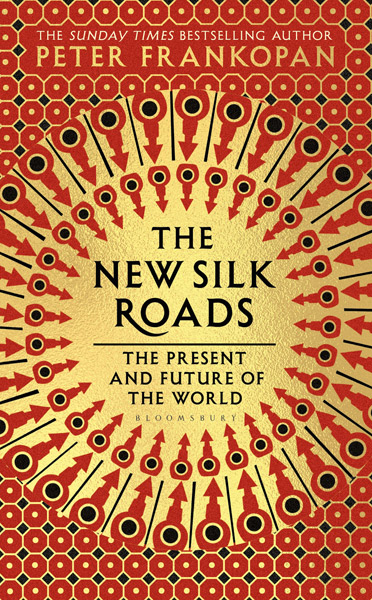 |
|
Peter Frankopan's new volume, The New Silk Roads: The Present and Future of the World. [PHOTO PROVIDED TO CHINA DAILY] |
Historian Peter Frankopan adds a new volume to his best-selling book, Andrew Moody reports from Oxford, England.
Oxford University historian Peter Frankopan has recently had to live down being placed in the same category as great authors such as Jane Austen and F. Scott Fitzgerald.
Frankopan's best-selling 2015 book, The Silk Roads: A New History of the World, was chosen in December as one of the 25 most influential books to be translated into Chinese over the past 40 years by Amazon China alongside Pride and Prejudice and The Great Gatsby.
"It was a poll with some 20,000 respondents. I nearly fell off my chair to be mentioned in the same breath as these authors," he says.
Frankopan, who was speaking over morning coffee at the Rooftop Restaurant of the Ashmolean Museum in Oxford, is still coming to terms with the success of his first book.
Previously laboring away in what might seem the obscure field of Byzantine history, his history of the ancient Silk Road network that connected Europe, Central Asia and China, coincided with a renewal of interest in these links and was an international best-seller.
"It went viral and global very quickly. It was published in Chinese at the beginning of 2016 and I was very lucky, timing wise, since it also coincided with even greater interest in China's Belt and Road Initiative," he says.
Frankopan is now back where the other book left off with a new volume, The New Silk Roads: The Present and Future of the World, which was released in November.
Whereas the previous book was an epic history spanning millennia, the new one is much more journalistic, taking in events as recent as the Forum on China Africa Cooperation meeting in Beijing in September and the ongoing trade conflict between the United States and China.
Like the first, however, it is superbly researched bringing in everyday examples such as the ownership of football clubs and Bordeaux vineyards to illustrate a more complex connected world.
"I initially set out to write a new up-to-date chapter for the first book but soon realized it would be better to try a shorter book that was a bit more journalistic," he says.
"I wanted to explain the Belt and Road (Initiative). I also wanted to look at countries like India, Pakistan, Iran and Russia. These are big second-tier countries, which have large populations and are quite big militarily. They are not superpowers yet but may well turn out to be that."
Frankopan says his approach is to join the dots that others do not tend to do when looking at the countries on this important axis.
"We don't tend to look at different parts of the world and how they are linked and the implications of that," he says.
"This book is a sort of snapshot of what is going on right now and is particularly useful for policymakers and journalists who don't always actually look at these connections."